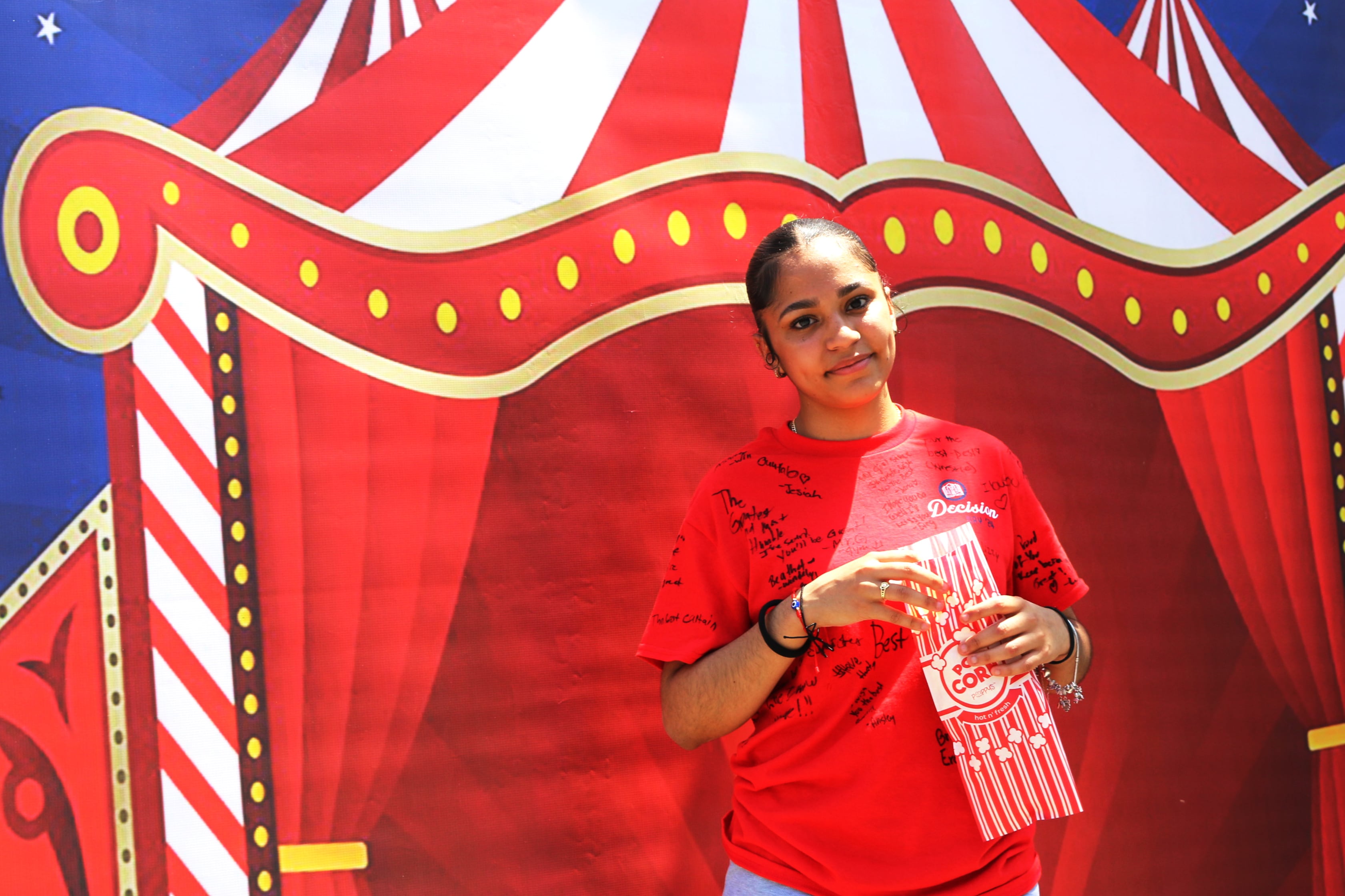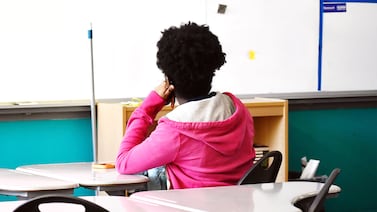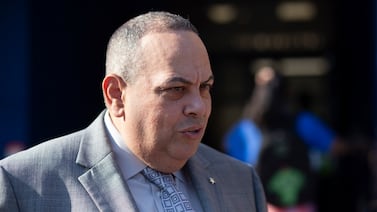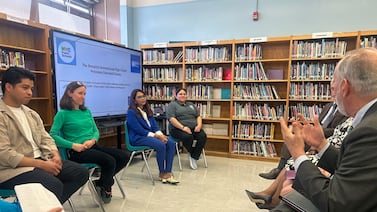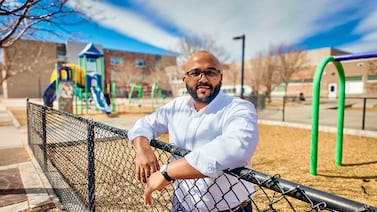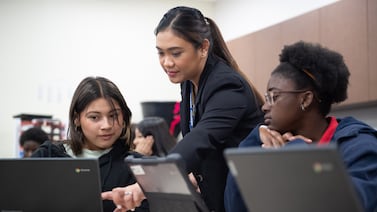About this series: Four years ago, Chalkbeat reporters documented the stories of high school freshmen experiencing a critical year through Zoom calls and from behind masks. These students, who experienced freshman year at a distance, are now graduating seniors. How did the pandemic shape their high school lives? How did their expectations for these formative four years play out? We caught up with these members of the Class of 2024 to find out.
Throngs of Bronx seniors packed into their schoolyard, feasting on empanadas, dancing to thumping music, and climbing through an inflatable obstacle course. It was college decision day and the blacktop outside Urban Assembly School for Applied Math and Science had transformed into a carnival.
That sweltering afternoon was one of Ashanty Peralta’s final days at the school she’s attended since sixth grade. The scene was the polar opposite of her freshman year, when Ashanty was one of just two students in her classroom on the first day of in-person lessons.
In October 2020, New York City was reeling from the pandemic and the Bronx had suffered from the highest rates of COVID infections, hospitalizations, and deaths of any borough. Officials scrambled to reopen classrooms, but half of city students and most of Ashanty’s AMS classmates chose to stay home and learn virtually. She was among the millions of American high school students who experienced their freshman year of high school behind a mask and socially distanced.
Four years later, a few bottles of hand sanitizer could still be found inside AMS. A now-disabled thermometer that once checked students for fever remains bolted to the wall. But that time was far from Ashanty’s mind as she weaved through the courtyard.
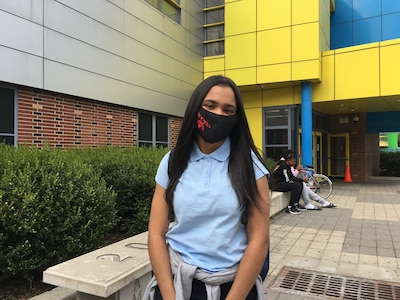
Her teachers and classmates took turns scribbling sendoff notes on her red “decision day” T-shirt. “You’re so driven and a great wrestler,” one teacher wrote.
“You’re the sweetest ever and I’m gonna miss you so much,” a classmate added. By the end of the afternoon there were few open spaces left.
“I was one of those kids who were very eager to socialize,” Ashanty said. “I can see how much I’ve grown.”
But Ashanty’s path to senior year was pockmarked with setbacks. Though she hoped to get in-person support from her teachers and start making friends freshman year, a citywide order to shut down school buildings that November meant she spent nearly the whole year behind a screen.
Meanwhile, her family life was unraveling. Ashanty, her mother, and two younger brothers, moved three times in four years, settling in Manhattan during her freshman and sophomore years before returning to the Bronx. Instead of a 10-minute walk to school, she faced more than an hour on the subway some days, making it difficult to participate in clubs and other activities.
When her mother suffered a broken toe, Ashanty also took on some of the cooking and laundry duties.
“I had to really step it up and be a mom to my siblings, too” who were 12 and 3 at the time, Ashanty said. The situation left her with “no motivation” for schoolwork, and she wondered if she would pass her classes.
Things didn’t improve much sophomore year. Even as all students were required to return to school in person, Ashanty still lived far away from campus and struggled to re-acclimate.
“My freshman year I didn’t really have that many friends,” she said. “And once 10th grade hit, I was like, ‘I don’t even know how to make friends at this point.’”
It was a low moment. But she resolved to throw herself into the school community rather than retreat from it. “It pushed me a lot to be more mature,” Ashanty said. “I was eager to be able to socialize more — to recover the year that I lost from not being able to go outside.”
Gaining confidence and lifting up others
Clubs and sports turned into a lifeline.
Ashanty is naturally shy, but she signed up for everything from cooking and pottery clubs to softball and volleyball.
“If I was in a club I had teammates. And your teammates are not people you’re going to fight with,” Ashanty said. “It was one of the easiest ways to make friends.”
Despite the camaraderie she found through sports, Ashanty said she didn’t wind up forging a tight group of friends. Athletics did, however, help her build a much closer bond with her brother, Albert, now a rising senior at AMS.
The pair often played sports together, including tennis and taekwondo. After cheering on Albert during a wrestling match, Ashanty worked up the nerve to join the team. She often competed against boys.
“That first year, she was a little timid,” said Chaka Baker, the school’s wrestling coach. That reticence didn’t last long. Baker remembers a moment when Ashanty faced a narrow defeat against a boy from Queens.
“She got a good hold on him, threw him, landed him on his back — the entire gymnasium erupted in applause and cheers,” Baker said. “Even after taking a tough loss like that she held her head high.” Ashanty eventually became captain of the team for two seasons, earned recognition as a top-ranked wrestler across the city, and had the chance to travel outside the city to compete, including to Philadelphia and Chicago.
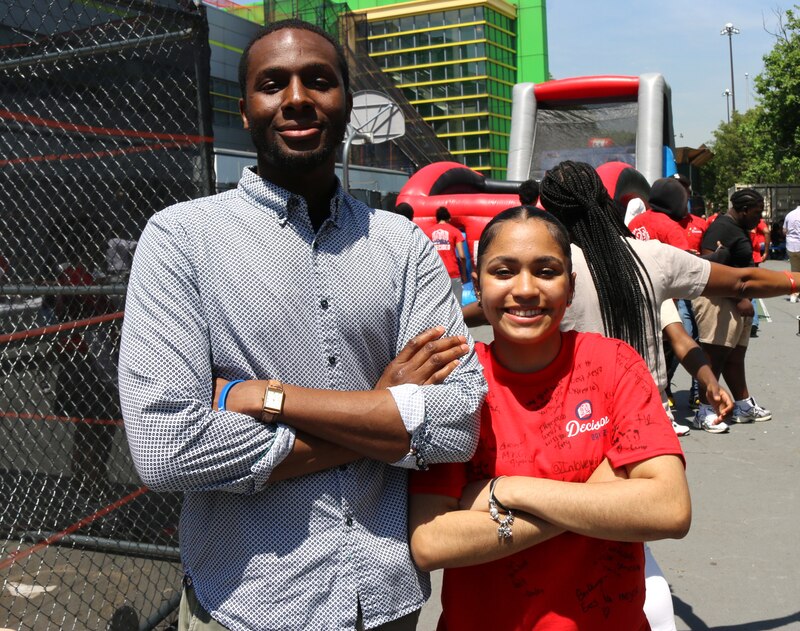
As Ashanty’s confidence grew, she forged deeper bonds with her teachers, too. She didn’t like history at first, but her attitude shifted sophomore year in Travis Taylor’s global history class. She was captivated by topics that lended themselves to debate like the Cuban missile crisis and the Israeli-Palestinian conflict.
“It changed my entire perspective on school and education,” Ashanty said. “With his class I was always eager to be here.”
The experience made her approach her principal with an unusual request: Could she help teach the class during her junior year?
With the principal’s blessing, Ashanty spent her advisory periods in Taylor’s classroom, often going over material one-on-one with students who were behind, and co-teaching a few lessons. In one instance, Ashanty worked with a boy who struggled to show up to class.
“He was Dominican, and I sat him down and really gave him that Dominican mother talk,” explained Ashanty, who moved to New York from the Dominican Republic almost a decade ago. She went over the material with him but also offered a pep talk about why he needed to pass the class. “You have to get it together,” she told the boy. “¿Qué tú estás haciendo?”
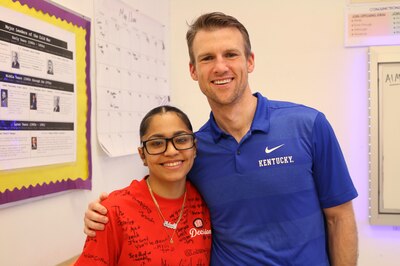
Taylor said Ashanty’s presence regularly helped pull disengaged students, including the one who struggled with attendance, back into their schoolwork.
“If Ashanty sat there and talked to him, maybe she’s talking in Spanish … he kind of would come up a little bit and do some work,” Taylor said. “Some of the kids I couldn’t reach. She could because she was their age.”
The college decision: to stay or go?
Ashanty enjoyed mentoring other students so much that she dreams of becoming a teacher. She imagines returning to her alma mater one day, following in the footsteps of Nairée Taveras, a former AMS student who returned to teach history.
“She’s just a natural leader,” said Taveras, one of Ashanty’s mentors. “She’s unafraid to be herself.”
But just days before graduation, Ashanty was still grappling with her next steps. She was accepted to multiple colleges that offer a variety of opportunities, but also vastly different experiences. She considered a private college more than 350 miles from the Bronx, as well as multiple public colleges closer to home.
Due to glitches with the federal student aid process, she was still waiting for final details about the financial packages. And some of her closest mentors have offered differing advice about where to go.
One educator nudged Asanty toward the private college. Meanwhile, Taveras cautioned Ashanty the school could feel isolating due to a lack of student diversity — an observation based on Taveras’ own experience at the same college.
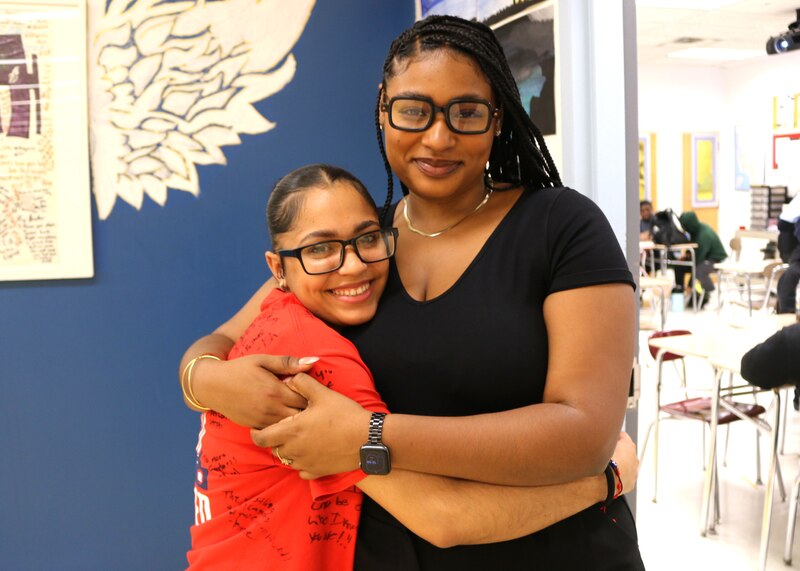
One of the main considerations for Ashanty was whether she could stand to be far away from her younger brother. That relationship helped Ashanty get through the toughest stretches of high school.
“He’s my support system,” she said. “Every sport that I do, he’s my teammate. He’s always there if I need to talk.”
As Ashanty got up to the microphone in the school cafeteria to announce her placeholder college decision last month, it started to dawn on her that whatever choice she makes about what to do after graduation, she likely won’t ever go to school with her brother again.
The thought of leaving him behind left her in tears.
A few minutes later, Albert emerged from the audience of cheering students and staff.
He offered Ashanty a hug.
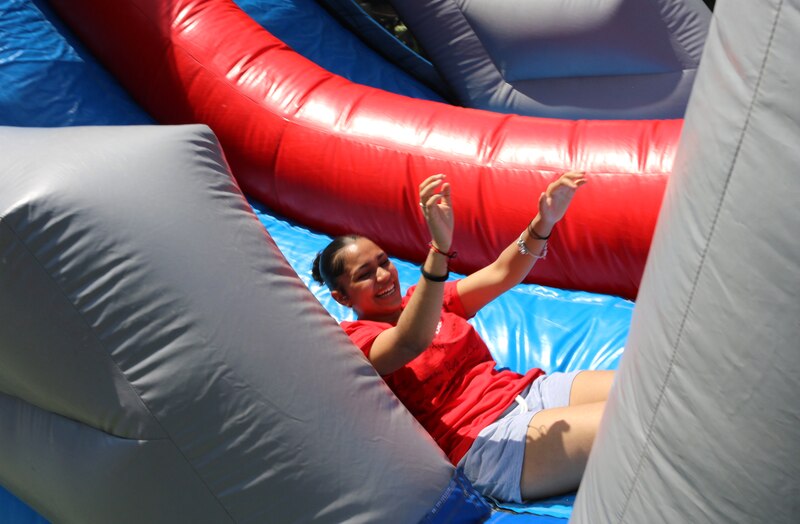
Alex Zimmerman is a reporter for Chalkbeat New York, covering NYC public schools. Contact Alex at azimmerman@chalkbeat.org.

